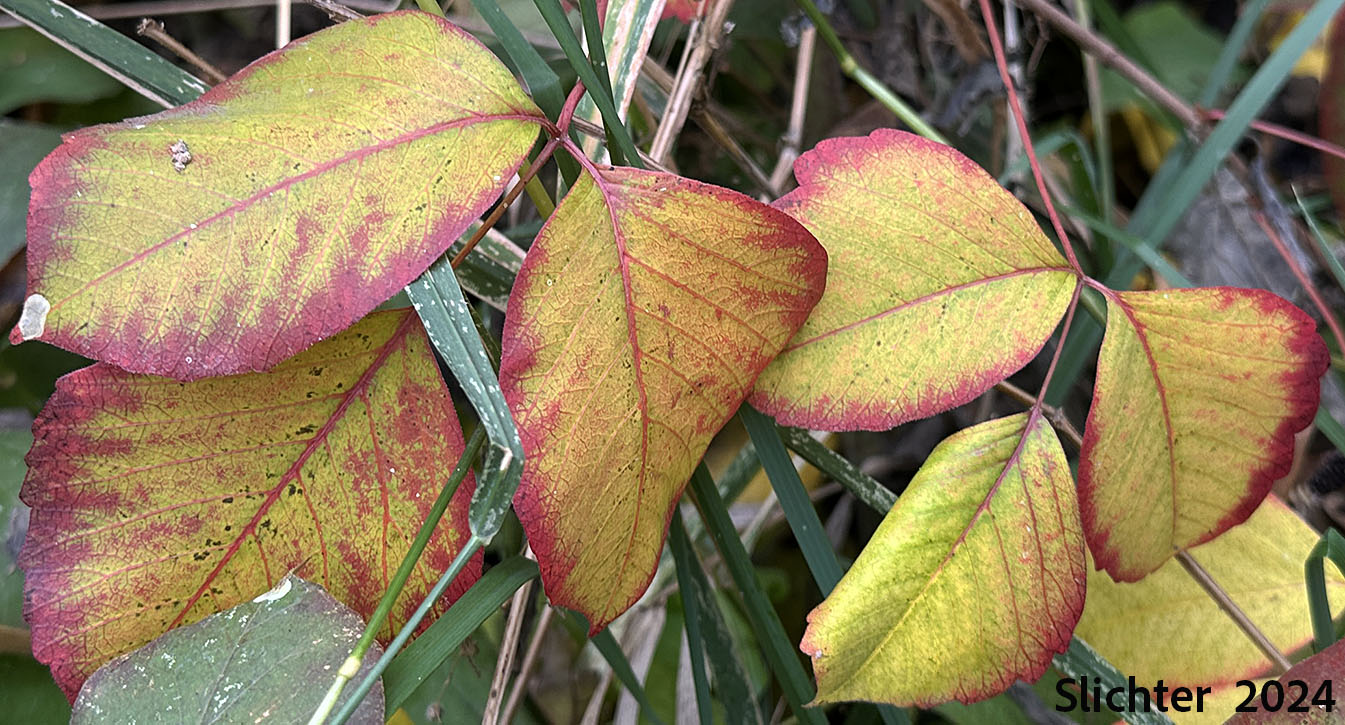
The genus name, Toxicodendron literally means from the Latin: toxico=poison and dendros=tree.
Poison ivy or poison oak is a rhizomatous shrub up to 1.5 meters tall. The stems are more or less erect and simple to sparingly branched. The herbage of the stems is pubescent, while the leaves are often glabrous on both surfaces, or occasionally hairy below with some hairs along the midrib above. Leaves are trifoliate with elongated petioles. Individual leaflets are ovate to broadly ovate or suborbicular. They range from 5-12 cm long with entire margins (occasionally with some irregular, pointed teeth. The tips of the leaves are acutely pointed or acuminate. The leaves are often folded upwards along the midrib as seen in the photos.
The axillary inflorescence is usually racemose with at most 25 flowers, or occasionally branched or paniculate with many flowers. The whitish flowers range from 2-3 mm long. The flowers are either male or female. Male flowers contain 5 fertile stamens. Female flowers contain 5-10 vestigial stamens separated from the ovary by a flat, lobed and fleshy disk. The style is short and 3-parted. The fruits are tiny white berries with a greenish or yellowish cast.
This plant contains oils which cause a severe dermatitis on many persons. Contact with any part of the plant, dead or alive may cause the allergic reaction.
Toxicodendron radicans may be found in open, sunny areas. It is often found in rocky canyons or along streams in the valleys and foothills.
Toxicodendron radicans may be found over much of the United States. It is found mostly in our area to the east of the Cascade Mts. It may be found from eastern Washington and Oregon east to the Atlantic Ocean and south to Mexico.
In the Columbia River Gorge, it may be found between the elevations of 200'-600' from near the Klickitat River east toward Biggs Junction, OR.